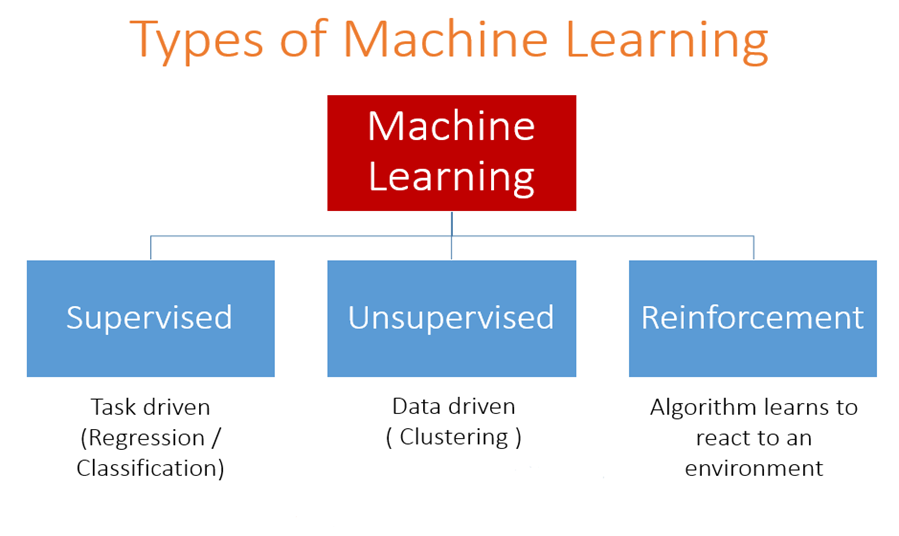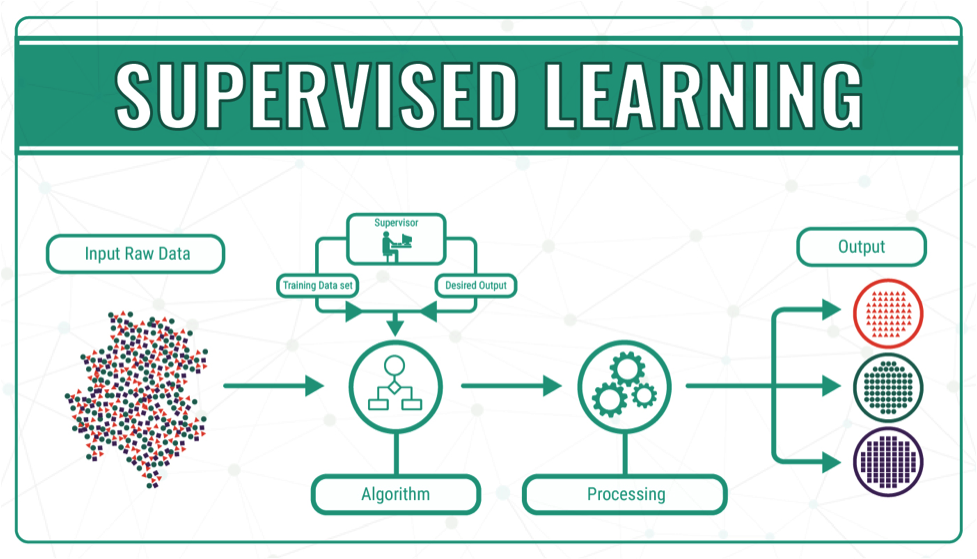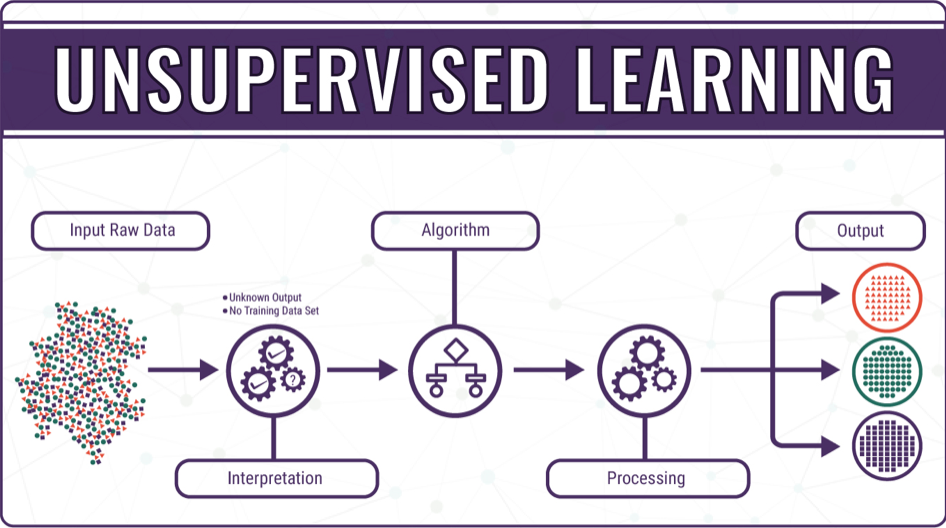- An Introduction to Machine Learning | The Complete Guide
- Data Preprocessing for Machine Learning | Apply All the Steps in Python
- Regression
- Learn Simple Linear Regression in the Hard Way(with Python Code)
- Multiple Linear Regression in Python (The Ultimate Guide)
- Polynomial Regression in Two Minutes (with Python Code)
- Support Vector Regression Made Easy(with Python Code)
- Decision Tree Regression Made Easy (with Python Code)
- Random Forest Regression in 4 Steps(with Python Code)
- 4 Best Metrics for Evaluating Regression Model Performance
- Classification
- A Beginners Guide to Logistic Regression(with Example Python Code)
- K-Nearest Neighbor in 4 Steps(Code with Python & R)
- Support Vector Machine(SVM) Made Easy with Python
- Kernel SVM for Dummies(with Python Code)
- Naive Bayes Classification Just in 3 Steps(with Python Code)
- Decision Tree Classification for Dummies(with Python Code)
- Random forest Classification
- Evaluating Classification Model performance
- A Simple Explanation of K-means Clustering in Python
- Hierarchical Clustering
- Association Rule Learning | Apriori
- Eclat Intuition
- Reinforcement Learning in Machine Learning
- Upper Confidence Bound (UCB) Algorithm: Solving the Multi-Armed Bandit Problem
- Thompson Sampling Intuition
- Artificial Neural Networks
- Natural Language Processing
- Deep Learning
- Principal Component Analysis
- Linear Discriminant Analysis (LDA)
- Kernel PCA
- Model Selection & Boosting
- K-fold Cross Validation in Python | Master this State of the Art Model Evaluation Technique
- XGBoost
- Convolution Neural Network
- Dimensionality Reduction
An Introduction to Machine Learning | The Complete Guide | Machine Learning

We are now living in the age of data. Every day we are producing immense data you can not even think of! According to some statistics, we are producing 2.5 quintillions bytes of data every day. See! This is huge and here comes the necessity of data-driven applications or precisely Machine Learning. As we have so much data around us we can find valuable insights and patterns from the data. And machine learning helps us to do so.
Around the year's machine learning has become a buzzword in the software industry and everyone is trying to make some use of machine learning to get more benefits from data. Google uses it to make the search more personalized, Amazon uses it to understand customer behavior, Facebook uses to face recognition and almost every giant company consider it seriously.
So, let's dive into the basic aspects of machine learning. This tutorial is developed to teach you all the concepts and phenomena you need to know about machine learning in the first place.
What Is Machine Learning?
Machine Learning(ML) is a subset of artificial intelligence where algorithms are developed to learn through experience from data. Machine Learning algorithms differ from traditional computer algorithms in their approach. Traditional computer algorithms are developed to perform a set of well-defined tasks where every instruction is defined properly and the algorithm is evaluated against the expected result. Whereas ML algorithms are developed to analyze data, learn from the data, and predict a result according to its learning experience. Here the approach is more statistical than explicitly programmed like traditional computer programs.
In brief, Machine learning is a subset of artificial intelligence that automates an analytical model built by using an algorithm that iteratively learns from data without being explicitly programmed. A system to ask questions and answers.
How Do Machine Learning Algorithms Work?
Machine learning algorithms are sophisticated mathematical models based on sample data. The data is mostly divided into two parts- training and evaluation/test data. The training data is fed to the mathematical model. The model then analyzes the mathematical properties among different attributes(here, attributes are the various aspects of data) and try to find some patterns/relationships among them. This is the learning part of a model.
Then come to the result part, here the model has to predict some output based on its learning. The model tries to fit the experience it has gain from the training data to an unknown situation and predicts according to its previous experience. The performance of the model is evaluated against the evaluation/test data. The accuracy of the model is taken as a percentage of how much it could predict accurately.
Take a traditional example from your mailbox. There are some messages which are kept in the spam folder. Spam messages are those which contain misleading information or inappropriate messages. So, how do the mails are classified as spam or not spam? Well, there is a simple machine learning concept behind this. Every spam emails contain some common words. The idea is here to remember those words and every time they are seen as a decent percentage then the email will be classified as spam. Here the model tries to find the percentage of those word from its previous experience which is gained from a set of training data containing emails labeled as "spam" and "not spam"
Examples of Machine Learning Applications in Real Life
There are numerous examples of machine learning in our day to day life. And the number of machine learning applications is increasing day by day. Here some of the common applications-1. Image Recognition Have you ever think about how Facebook or other social media tag people in a picture? Right! They use machine learning, specifically image recognition. It is an area of machine learning where a mathematical model is fed with image data with appropriate labels, the model learns from the image features and then tries to classify from this experience.
2. Conversational Intelligence Softwares Siri, Alexa, Google Assistant, and other voice assistants are good examples of conversational AI Softwares. And they use similar concepts form Natural Language Processing and Machine Learning to incorporate the human voice with intelligence.
3. Product Recommendation The wide use of machine learning is recommendation engines. There are many examples of them such as Amazon uses it to suggest similar products from your previous purchases. Netflix uses it to recommend movies of your choice. Here the model analyzes the user behavior, continuously learns from it, and predicts according to its experience.
4. Personalized Advertisements Probably the biggest use of machine learning is in personalized advertisements. A model learns from a user behavior- from search history, buying pattern, liked products in social media, etc. and then it adjusts the choice of a user with an appropriate ad. All the technology giants like Google, Facebook, and other social media use this type of model to advertise their users.
5. Healthcare Machine learning tools and algorithms are massively used in disease diagnosis. There are also uses in drug designing, genome sequencing, and many other healthcare issues.
Types of Machine Learning Algorithms
Basically, there are three types of machine learning algorithms-- Supervised Learning
- Unsupervised Learning
- Reinforcement Learning

These three types are then extended into more classifications. Let's take some overviews of those types.
Supervised Learning Algorithms
As the name suggests, the model gets some guidance or supervision in the time of training. It deals with labeled data or more precisely the model knows about the output while it is being trained. In a supervised learning approach, the data variables are divided into dependent and independent variables. Here dependent variable(s) are the outputs with an explicit label(i.e. yes/no or a specific value). The model tries to find the correlation between the dependent and independent variables and use this knowledge to predict the outcome.
Recall our previous example of the classification of emails. When the model is in training, the emails are fed with labels as "spam" or "not spam". This is a supervised learning algorithm.

Supervised Learning has two types-
- Regression Regression is used when the output label is a continuous value such as money, age, weight where the model has to predict a value in some sort of range. For example, if you have a dataset that contains the salary of a certain number of employees according to their experience, your model will find the correlation between the experience and salary from that dataset. And with that experience, it will predict the unknown salary of employees from their experience. Here, salary is a continuous variable.
- Classification Classification is the task of predicting the value of a categorical variable(target or class). Here, the output is discrete. The model has to classify the classes. For instance, if you have a dataset that represents the status of the customer whether they buy a certain product or not. This is a problem to be solved by a classification model.
Unsupervised Learning Algorithms
Unsupervised learning deals with unlabeled data. Here the model does not the output in the time of training. The model has to analyze the data, finds some patterns from them, and act according to its learning. This is more like feeding the model a set of data from which we need to find some insight but don't know how to get that. So, we let it to an unsupervised mode. The model can discover something we have not thought before!

Unsupervised learning has two type-
- Clustering This is basically analyzing the data to group them to some clusters based on similarity among the data. Here, the groups are made from the data which are similar in nature(statistically of course!). An example can be taken as grouping customers according to their expenditure (i.e. small, medium, big). Here we did not classify them before. The model will do that.
- Association Association algorithms try to find some rules or associations among the data. The model relates a data point to another with a rule it has discovered by analyzing the dataset. You may have seen this in various e-commerce sites like Amazon. When you go there to buy a product there is a section named frequently bought together or people also buy this comes up and prompts you similar products to buy.
Reinforcement Learning
Reinforcement Learning is reward-based learning. The algorithm or agent learns from its surrounded environment. The environment contains rewards and penalties. The model performs various actions. It receives rewards for correct actions and gets penalties for improper actions. The model is defined as to maximize its rewards and minimize its penalties. It always tries to leverage itself from previous experience i.e. tries not to repeat a wrong action again or do a correct action every time. This is a dynamic learning environment where the agent needs to respond correctly with his action.
Think of a computer program that solves a maze. First, it makes many mistakes. But it improves after every decision it takes. Repeating the actions continuously, it eventually becomes a better player. This is a simple example of reinforcement learning.

Final Thoughts
In this article, I have tried to keep you informed about the main aspects of machine learning. I started with the definition and use cases of machine learning then went further to give you some glimpses of how machine learning works. I tried to give you a clear idea about the different types of machine learning algorithms and their example uses. The possibilities of using machine learning in various fields are increasing day by day. If you become a data scientist/ML engineer, it is high time you should learning machine learning algorithms.
Hope this article provided you enough ideas to kickstart your journey. Happy Machine Learning!